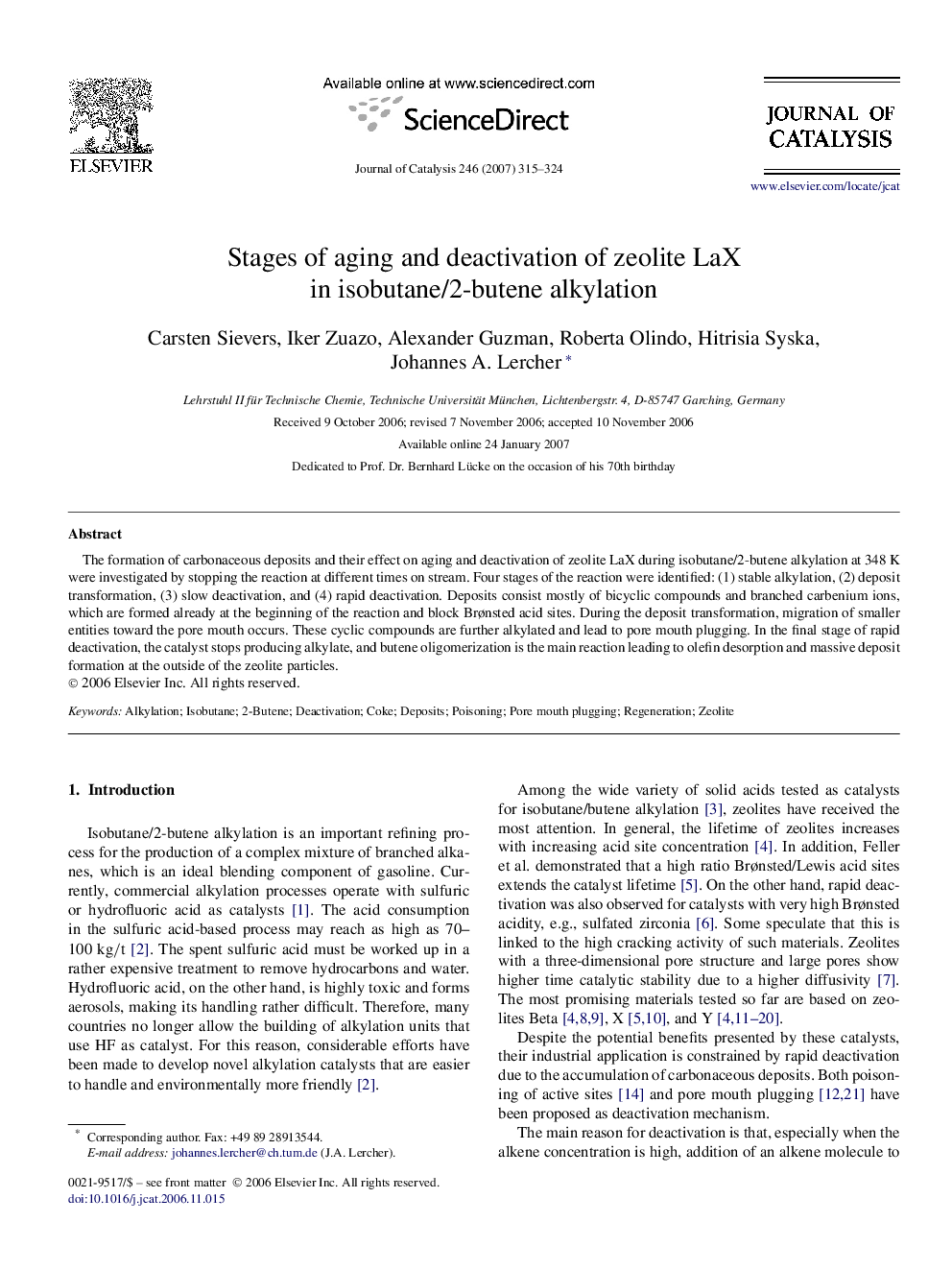| Article ID | Journal | Published Year | Pages | File Type |
|---|---|---|---|---|
| 63010 | Journal of Catalysis | 2007 | 10 Pages |
The formation of carbonaceous deposits and their effect on aging and deactivation of zeolite LaX during isobutane/2-butene alkylation at 348 K were investigated by stopping the reaction at different times on stream. Four stages of the reaction were identified: (1) stable alkylation, (2) deposit transformation, (3) slow deactivation, and (4) rapid deactivation. Deposits consist mostly of bicyclic compounds and branched carbenium ions, which are formed already at the beginning of the reaction and block Brønsted acid sites. During the deposit transformation, migration of smaller entities toward the pore mouth occurs. These cyclic compounds are further alkylated and lead to pore mouth plugging. In the final stage of rapid deactivation, the catalyst stops producing alkylate, and butene oligomerization is the main reaction leading to olefin desorption and massive deposit formation at the outside of the zeolite particles.
